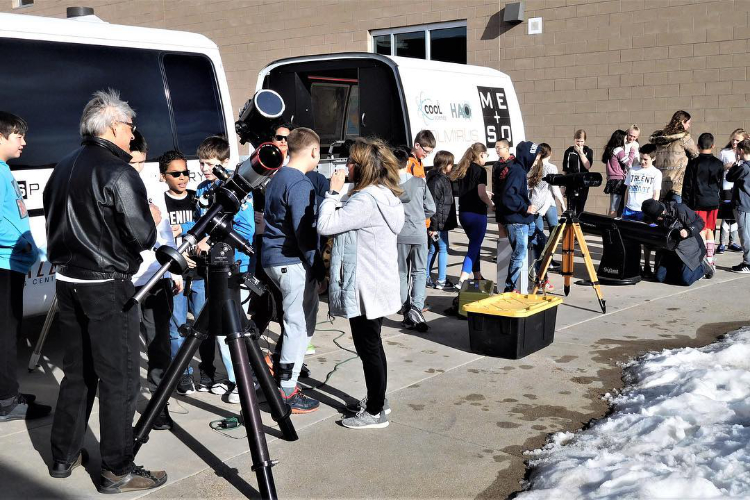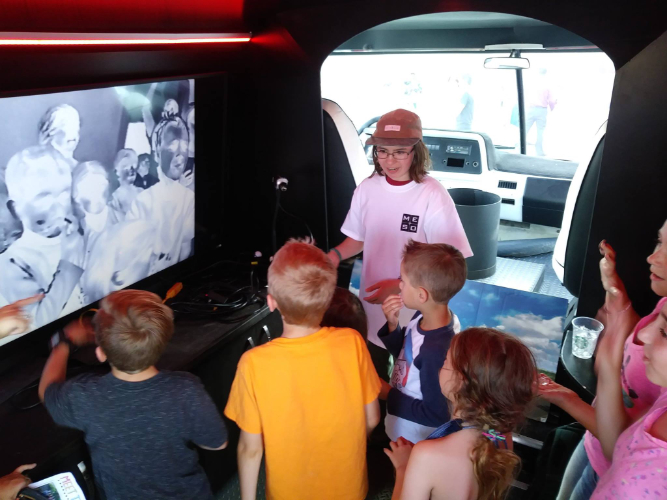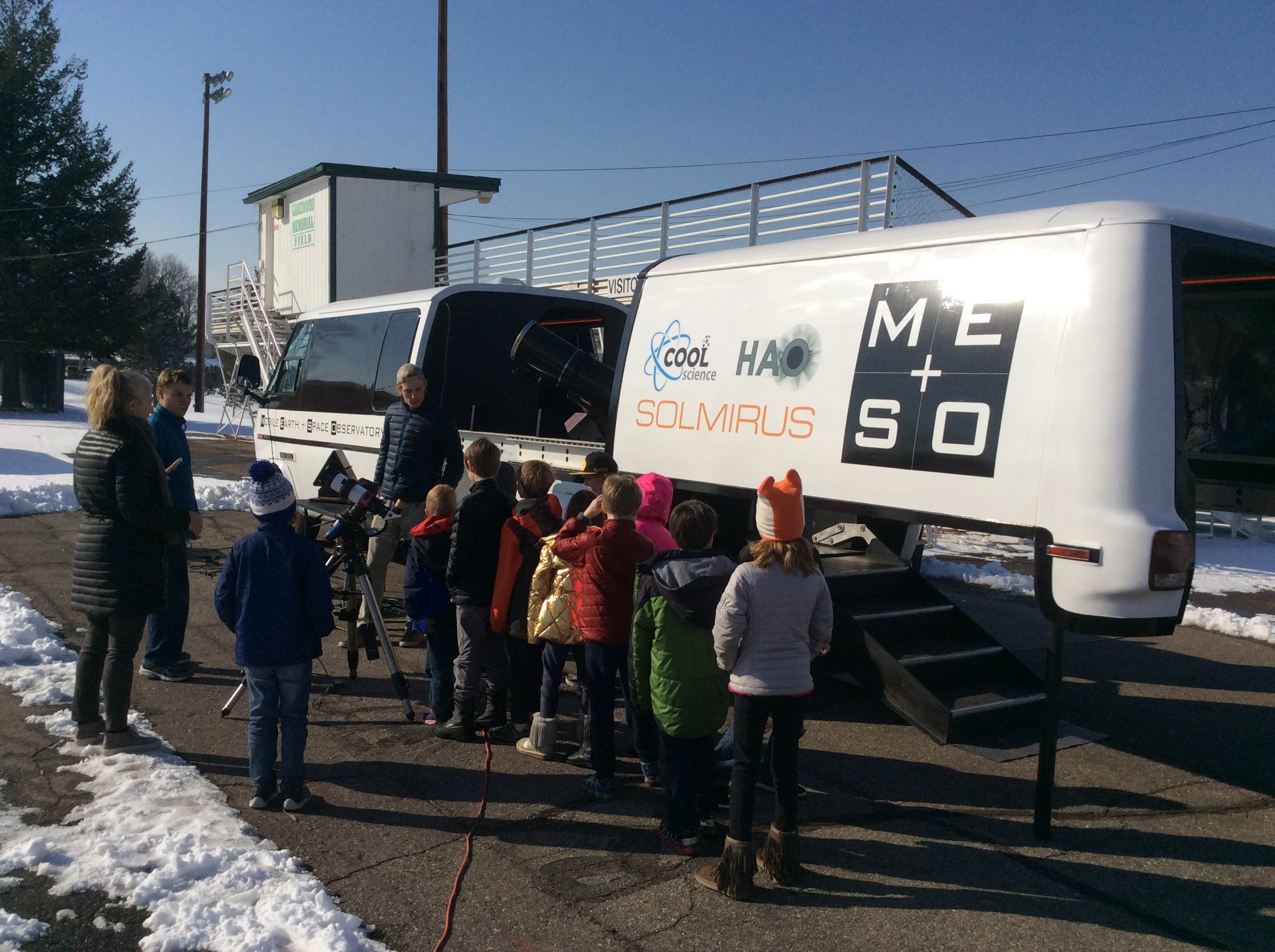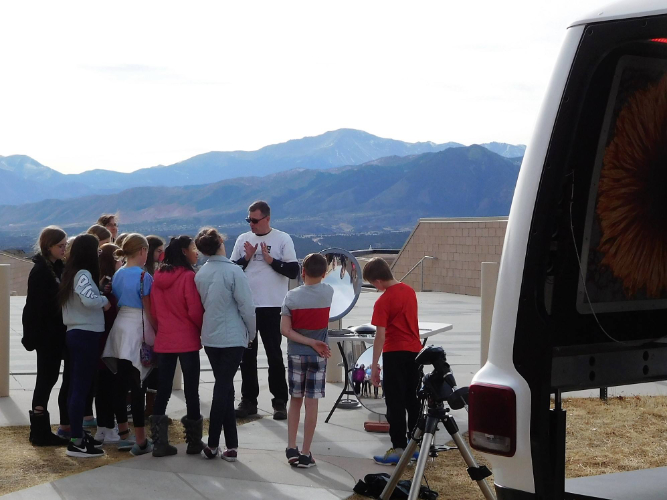Want MESO at your school? Book it!
Let the Mobile Earth + Space Observatory come to you! Our scientist educators will transform your classroom, school, or event into a space of innovation, discovery, and experimentation. These programs fuel a passion and curiosity for nature & science. MESO will bring everything to make this a meaningful and memorable educational experience for your students and participants. MESO programs and activities are inquiry based with an emphasis on getting participants hands on scientific equipment! Programming has been developed by professional educators, vetted by PhD scientists, and delivered through interactive, hands on, fun experiences in a classroom or aboard MESO.
We offer Event Programming and Classroom Programming:
Event Programming involves a MESO educator, plus 1 logistics staff member, who will guide students/participants as they interact independently with science displays, such as for a science festival.
Classroom Programming involves a dedicated MESO educator, plus 1 logistics staff member, who will conduct in-depth learning activities for classes up to 24 students. Additional educators can be arranged for multiple classes.
Find our latest listing of programs in our Program Catalog.
Find more information about what MESO provides on the Pricing page.




Available Program Lengths:
90-minute: Only for locations within 25 miles of the MESO address.
Half-day: 4-hour period, includes 3 hours of classroom programming or 4 hours of event programming. Can be split between multiple classrooms.
Full-day: 6-hour period, includes 5 hours of classroom programming or 6 hours of event programming. Can be split between multiple classrooms.
STEM Night/Star Party: Consists of 3 hours of continuous programming.
Please contact us at info@nssti.org if you have any questions. Book Now!
Click here to view our latest Program Catalog